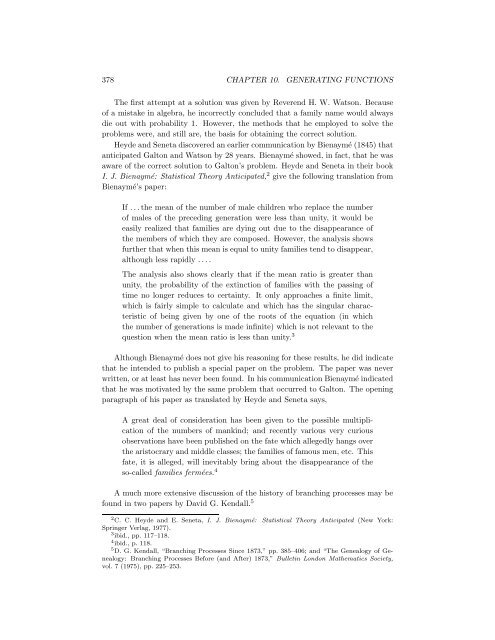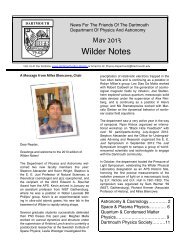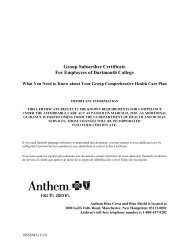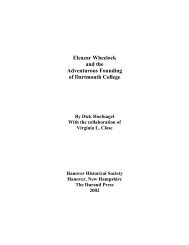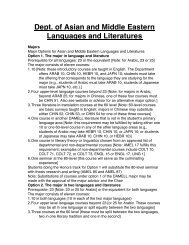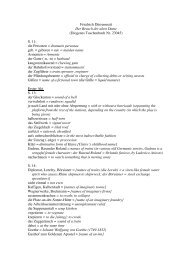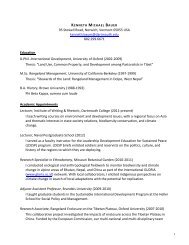Chapter 10: Generating Functions
Chapter 10: Generating Functions
Chapter 10: Generating Functions
Create successful ePaper yourself
Turn your PDF publications into a flip-book with our unique Google optimized e-Paper software.
378 CHAPTER <strong>10</strong>. GENERATING FUNCTIONS<br />
The first attempt at a solution was given by Reverend H. W. Watson. Because<br />
of a mistake in algebra, he incorrectly concluded that a family name would always<br />
die out with probability 1. However, the methods that he employed to solve the<br />
problems were, and still are, the basis for obtaining the correct solution.<br />
Heyde and Seneta discovered an earlier communication by Bienaymé (1845) that<br />
anticipated Galton and Watson by 28 years. Bienaymé showed, in fact, that he was<br />
aware of the correct solution to Galton’s problem. Heyde and Seneta in their book<br />
I. J. Bienaymé: Statistical Theory Anticipated, 2 give the following translation from<br />
Bienaymé’s paper:<br />
If . . . the mean of the number of male children who replace the number<br />
of males of the preceding generation were less than unity, it would be<br />
easily realized that families are dying out due to the disappearance of<br />
the members of which they are composed. However, the analysis shows<br />
further that when this mean is equal to unity families tend to disappear,<br />
although less rapidly ....<br />
The analysis also shows clearly that if the mean ratio is greater than<br />
unity, the probability of the extinction of families with the passing of<br />
time no longer reduces to certainty. It only approaches a finite limit,<br />
which is fairly simple to calculate and which has the singular characteristic<br />
of being given by one of the roots of the equation (in which<br />
the number of generations is made infinite) which is not relevant to the<br />
question when the mean ratio is less than unity. 3<br />
Although Bienaymé does not give his reasoning for these results, he did indicate<br />
that he intended to publish a special paper on the problem. The paper was never<br />
written, or at least has never been found. In his communication Bienaymé indicated<br />
that he was motivated by the same problem that occurred to Galton. The opening<br />
paragraph of his paper as translated by Heyde and Seneta says,<br />
A great deal of consideration has been given to the possible multiplication<br />
of the numbers of mankind; and recently various very curious<br />
observations have been published on the fate which allegedly hangs over<br />
the aristocrary and middle classes; the families of famous men, etc. This<br />
fate, it is alleged, will inevitably bring about the disappearance of the<br />
so-called families fermées. 4<br />
A much more extensive discussion of the history of branching processes may be<br />
found in two papers by David G. Kendall. 5<br />
2 C. C. Heyde and E. Seneta, I. J. Bienaymé: Statistical Theory Anticipated (New York:<br />
Springer Verlag, 1977).<br />
3 ibid., pp. 117–118.<br />
4 ibid., p. 118.<br />
5 D. G. Kendall, “Branching Processes Since 1873,” pp. 385–406; and “The Genealogy of Genealogy:<br />
Branching Processes Before (and After) 1873,” Bulletin London Mathematics Society,<br />
vol. 7 (1975), pp. 225–253.


